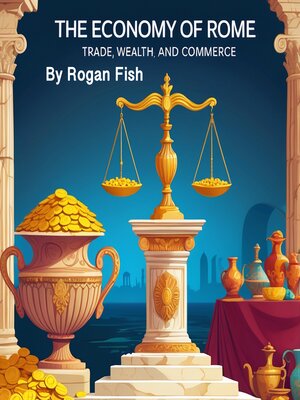
Sign up to save your library
With an OverDrive account, you can save your favorite libraries for at-a-glance information about availability. Find out more about OverDrive accounts.
Find this title in Libby, the library reading app by OverDrive.



Search for a digital library with this title
Title found at these libraries:
| Library Name | Distance |
|---|---|
| Loading... |
The Roman economy was built upon a complex and interdependent system that evolved from its agrarian roots into a vast network of trade, production, and commerce. From the early Republic to the height of the Empire, Rome's economic foundation was shaped by its reliance on agriculture, slave labor, and a structured monetary system. These key components allowed the Roman state to sustain its military conquests, support its urban populations, and facilitate long-distance trade across the Mediterranean and beyond.
Agriculture served as the backbone of the Roman economy, with the majority of the population engaged in farming. Small-scale subsistence farming dominated early Roman society, but as the Republic expanded, wealthy landowners acquired vast estates known as latifundia. These estates were worked by slaves and tenant farmers, producing surplus crops such as wheat, olives, and grapes, which were essential to both local consumption and trade. The shift from independent farming to large-scale agricultural estates increased economic disparities but also enabled Rome to support a growing urban population and supply its armies.
Slavery played a crucial role in sustaining the Roman economy. Enslaved people were not only laborers in agriculture but also worked in mines, workshops, and domestic households. The steady influx of slaves, primarily through military conquests, allowed Rome to maintain high levels of production and economic growth. The reliance on slave labor, however, also created structural weaknesses, as the economy was dependent on a continuous supply of enslaved workers, making it vulnerable during times of military decline.







